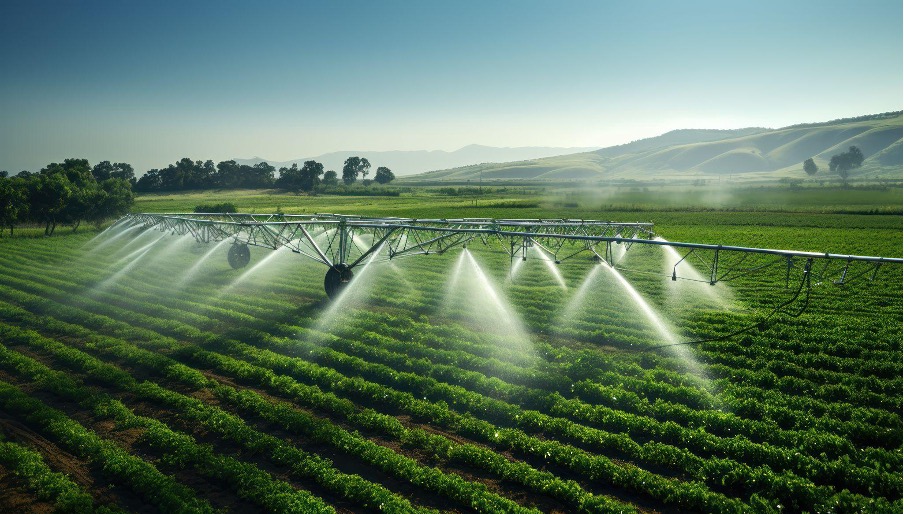Sustainability looks to be the future of agriculture, a future that is being increasingly steered by new technologies that attempt to feed the growing population in a sustainable manner. Here are 10 of the most innovative techniques that are likely to transform agriculture in the coming years:
1. Precision Agriculture
Precision farming is the term that is used to describe farm management that is based on data and allows for the field that is managed to be managed in a very particular way. It combines GPS, remote sensing, soil scanning and other technologies to map the within fields and helps farmers to plan their planting, fertilizing and harvesting strategies with high precision and high accuracy. This causes the rise of production capacities, reduction of costs, and improvement of the environment.
2. Agriculture Drones
These agricultural drones that are equipped with multispectral cameras and other state-of-the-art sensors are being used for crop survey and crop monitoring. The drones, through the data they provide on plant health and development, help to respond to challenges faster and provide a basis to make decisions. Drones also promote more efficient and accurate spraying of agricultural chemicals such as pesticides and fertilizers.
3. Crop Sensors
On-field crop sensors, in real-time mode, provide the current crop status, soil conditions, presence of pests or diseases, moisture level and other data. Through this, crop monitoring from a distance is made possible, and appropriate decisions in management are taken to ensure crops have high productivity and quality. Sensors too are used by farmers for the implementation of these practices.
4. Indoor Vertical Farming
Indoor vertical farming is an indoor technique where crops are stacked on top of each other in a controlled environment. This technology utilizes LED, hydroponic or aeroponic systems and intelligent management systems to achieve crop growth all-year round. Water, land and other resources are saved with vertical farming, and this technique safeguards crops from unpredictable weather.
5. Hydroponics & Aeroponics
Hydroponics and aeroponics are two methods that do not require soil for growing plants. These techniques allow us to control the rooting environment which is a good thing. Unlike hydroponics that uses nutrient-rich water solution, aeroponics is the system in which the roots of the plants are suspended in the air and fed by water vapor. Both the methods are still on the way to be upgraded with the help of IoT-based monitoring and controlling technologies and gradually being adopted for the conservation of water and utilizing the land in an efficient manner.
6. Smart Greenhouses
Modern smart greenhouses utilize Internet of Things sensors, intelligent software, LED lights, robots and other technologies to obtain ideal growing conditions with low resource consumption and low labor requirement. The sophistication of smart greenhouses is such that it gives farmers the ability to control many environmental factors and automate tasks like watering, harvesting and pest control.
7. Agricultural Robots
Human-like robots are now being utilized for the simple but repetitive job of harvest, weeding, mowing, pruning, sowing and so on. They can execute these tasks much faster, more cost-efficiently, and without any human error. Robots in farming are cost saving, crop damage minimizing and reducing person involvement in farms.
8. Gene Editing
The emergence of CRISPR and other powerful gene editing tools is of paramount importance to plant breeders because it allows them to modify plant DNA with a precision and flexibility that has been unseen before. This way the development of new crop varieties with higher potential of yield, better resistance to diseases and pests, drought tolerance, more nutritional value and so on are possible. The possibilities of genetic engineering can be utilized efficiently and productively to provide global food security in a sustainable way.
9. Agroforestry
Agroforestry, which has been around for eons, is getting fresh attention from farmers and scientists. Through this integrated practice, farmers are able to cultivate different crops, livestock and woody perennials like trees and shrubs on the same pieces of land to stimulate sustainability, soil health and better productivity. In addition to that, agroforestry removes more carbon and inserts trees into agriculture and landscapes to serve as food, fodder and fuel sources.
10. Cellular Agriculture
Cellular agriculture is the process through which cultured cells are used to produce agricultural products such as meat, milk, egg whites, leather and silk, therefore, animals are not raised. This cell-cultured technology does not involve the use of animals and instead relies on direct cell culture. In the wake of the increasing development of cellular agriculture, livestock production may be disrupted and advanced food categories created.
In addition to using data and technology to achieve more efficient production, minimize waste, improve efficiency and accuracy, support controlled environment growing, augment genetics to create new ways, and even produce novel agricultural products from cell cultures, these 10 modern agricultural techniques represent some of the most innovative and promising ways to sustainably feed the increasing population. The future of food is contingent on the further development and implementation of all the innovative approaches.

